Twelve of the most common coastal flowers to be seen in late May and early June are listed below and shown in the late spring coastal wild flowers gallery:
- Bulbous Buttercup (Ranunculus bulbosus)
- Cat’s-ear (Hypochaeris radicata formerly Hypochoeris radicata)
- Common Bird’s-foot-trefoil (Lotus corniculatus)
- English Stonecrop (Sedum anglicum)
- Kidney Vetch (Anthyllis vulneraria)
- Oxeye Daisy (Leucanthemum vulgare)
- Rock Sea-spurrey (Spergularia rupicola)
- Sea Campion (Silene uniflora)
- Sea Carrot (Daucus carota subsp. gummifer)
- Sheep’s-bit (Jasione montana)
- Spring Squill (Scilla verna)
- Thrift or Sea Pink (Armeria maritima subsp. maritima)
There are so many wild flowers that could be included in the list it’s difficult to know where to stop!
Of course, Cornwall also has many plants that are rare in the British Isles, such as Chives (Allium schoenoprasum), and some that are only found in the south west or just on The Lizard peninsula. More posts on these will follow.
Related pages: Wild flower posts | British wild flowers gallery
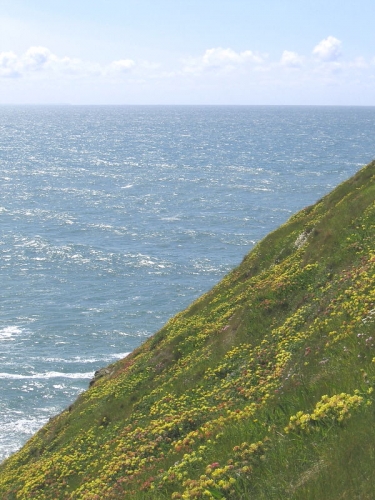



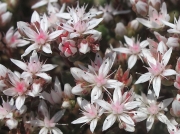
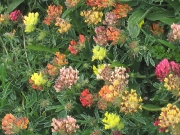


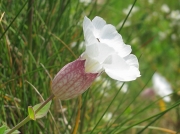
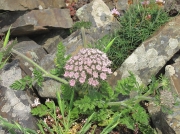

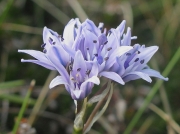

5 Responses
Claire Ogden
Hi Dan
Thanks for your comment. There is likely to be a lot of wonderful coastal flowers when you visit although it’s probably a week or two too early to see them at their very best. I suggest you look at the citations for the nearby SSSIs which can be found on the Natural England website to see what plants are special in the area for example the Aire to Carrick Du SSSI. This will give you an idea of rare or scarce plants to look for although as you’re coming from Cumbria you may prefer to study something which is abundant here but you may be less familiar with it.
Hope you all enjoy your visit to St Ives.
Claire
Daniel Sencier
Hi folks, I am part of a group of 6 wildlife students from the University of Cumbria who are staying near St ives in late April this year. We have to chose a wildlife topic to research, either plant or animal. I have decided plant, but are there any recommendations on what might be interesting from mid April? All other ideas welcome.
Many thanks
Dan
Henry Law
Brilliant, Claire: thank you (both for the information and the very prompt response). My wife and I discussed Dodder and reckoned that what we were looking at wasn’t it; but I think the lack of flowers at this time of year — and the profusion of the stuff — threw us off the scent. Where we come from oop north it’s quite uncommon.
I note with interest that it’s a “noxious weed” in lots of states of the US, according to the US Dept of Ag!
Claire Ogden
Hello Henry, thanks for your comment. It sounds as though you were looking at Dodder (Cuscuta epithymum). It has red stems and is parasitic on gorse, heathers and wild thyme. It is native but only local in south and south west England and rare elsewhere. Click here to see our post of it in flower last July on the north coast of Cornwall. Good description by the way!
Henry Law
Beautiful photographs. I came here hoping to identify a strange red creeper/vine that we saw on the headlands of the South Coast Path, to the east of Porthcurno. Growing over Gorse and brambles it formed a red mat of “hair” — the only way I can describe it. Looking closely at the “hairs” one could see that it’s a creeper of some kind, with tendrils that hang on. I never saw anything like it anywhere before. Can you help with identification?